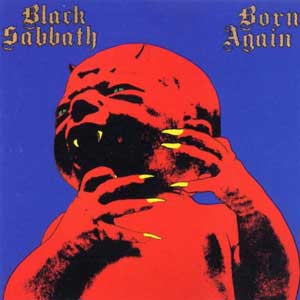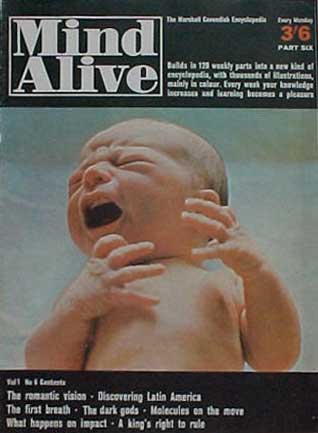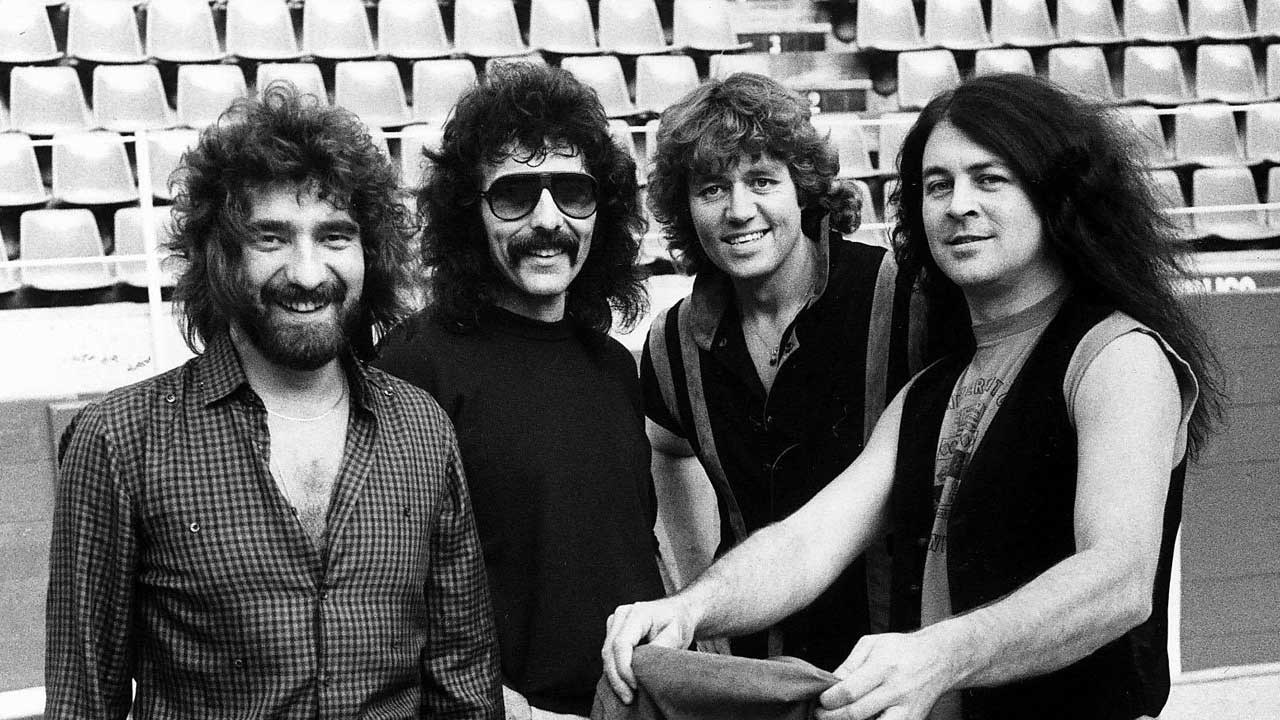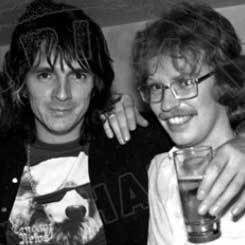Eddie Van Halen and Michael Jackson. Freddie Mercury and Monsterrat Caballé. Ozzy Osbourne and Miss Piggy. Gene Simmons and Cher. Lawnmower Deth and The Great Kat. Glenn Hoddle and Chris Waddle.
The world of music has thrown up some mighty strange partnerships over the years. But none more strange – not to say disastrous – as the combination of Ian Gillan and Black Sabbath. It was a marriage made in hell. (Which, when you think about it, was highly appropriate given the Sabs’ devil-horned heritage.)
When vocalist Ronnie James Dio bowed out of the band, blaming disputes over the 1982 Live Evil effort, Tony Iommi & co found themselves in a fix. Memories of Dave Walker (the ungainly Brummie they brought in to replace Ozzy Osbourne for a few months in ’77) began to resurface.
The Sabs were not only without a singer, they were embroiled in a war of words with le petit Ronald, who accused his old bandmates of tampering with the sound of Live Evil by muting his vocals and cranking up their own instruments instead.
Sabbath retorted by saying that Dio had been spotted sneaking into the studio at the dead of night – through the cat flap, they jibed – and doing the exact opposite. It was all getting rather silly.
It got sillier still when Ian Gillan split his own band, Gillan, on the pretext of joining up with a reunion of the Mk II line-up of his former group, Deep Purple. When that reformation was put on ice for a year or so, Gillan was at a loose end. Then the Dio news broke and, even though Purple and Sabbath had been fierce rivals in the past, Ian began to contemplate an unusual career move…
Gillan met up with guitarist Iommi and bass player Geezer Butler in a pub in Woodstock, Oxfordshire. The singer had had a car crash on the way to the meeting (“I arrived in an L-shaped car,” he once recalled) and the trio proceeded to get royally pissed.
The next day Ian received a phone call from his personal manager to tell him that he had agreed to become the new singer in Sabbath. Gillan was as bemused as he was hung over. He had no idea what his manager was talking about. But, dammit, he decided to join the Sabs anyway.
The sole album Gillan recorded with Sabbath, ’83’s Born Again, is generally regarded as the nadir of the band’s career. To this day, rumours persist that it wasn’t supposed to be a Sabs release at all, but rather some sort of supergroup offering.
However, like the Seventh Star solo record that Tony Iommi made with Glenn Hughes, the Black Sabbath name eventually prevailed. Reissued via Sanctuary in 2004, Born Again was described as ‘abominable’ in issue 75 of Classic Rock, but is it really that bad? To be frank, it ain’t half as bad as it’s painted – even though the album’s cover most definitely is.
Gillan’s ingrained rock’n’roll sensibilities and Sabbath’s traditional lumbering approach remain a volatile mix. (“The guy’s [Gillan’s] voice is just too distinctively un-Sabbath,” Ronnie James Dio once complained.) But apart from some awful demonic cackling in Disturbing The Priest and some trite lyricism (Keep It Warm, for example, being a timeworn tale of a randy ol’ rocker returning home to his gal) there’s plenty to enjoy here in Born Again.
Gillan puts in a consummate vocal performance, full of tonsil-tormenting howls and banshee wails; Iommi offers an atypically shrill solo on Trashed; the Close Encounters-style cosmic twittering on the instrumental The Dark leads dramatically into Zero The Hero’; the gruff riff to …Hero is strangely reminiscent of Guns N’ Roses’ Paradise City; Digital Bitch is jam-packed full of Ted Nugent-style rolling thunder.
There’s no escaping the fact that Born Again is viewed by most as a dismal failure, even though it reached No.4 in the UK chart – the band’s highest position since Sabbath Bloody Sabbath, with Ozzy on vocals, in ’73. But the cause of the Gillan-led Sabs wasn’t helped by an appearance at the August ’83 Reading Festival: in front of a giant polystyrene mock-up of Stonehenge that didn’t even fit on to the stage, the band’s set climaxed with a version of Deep Purple’s Smoke On The Water. Inexplicable, execrable, but true.
Thankfully, a mooted version of the Electric Light Orchestra’s Evil Woman (ELO drummer Bev Bevan having replaced Bill Ward in the Sabs by this time) failed to materialise.
In November ’84 this writer found Ian Gillan back in Deep Purple. The delayed reunion of the Mk II line-up of the band had finally taken place, and the singer was palpably relieved to be out of the Sabbath firing line. But the memories of Born Again still lingered uncomfortably: “When you’re a nobody, then any career gaffes you might make don’t really matter. I went through five or six bands before I joined Deep Purple and all the failures I had were anonymous failures; nobody knew about them except a handful of people. Failures happen,” Gillan said frankly.
Initially, Gillan thought Born Again “was brilliant. Absolutely fucking sensational... until it was mixed, when it was totally destroyed. I went away for a holiday after we’d finished recording it, and I was well pleased. I thought, I’ll leave the guys to it now, they’ve been around for years, they know what they’re doing. But as soon as I went away – as I understand it, anyway – all these outside influences started creeping in.
“When I came back off holiday I found they’d sent me a bundle of 20 ‘Born Again’ albums. I looked at the cover and puked. I put the LP on the turntable and was disgusted by it. It was just garbage. In a rage, I smashed all of the 20 albums to pieces.”
After all that, it was no surprise to hear Gillan say later: “Heavy Metal drives me bonkers. It makes me want to vomit."

The Born Again artwork

The cover artwork for Born Again\ has created more controversy than any of the band’s records, and according to designer Steve ‘Krusher’ Joule, the circumstances behind the sleeve’s birth were highly unusual.
“Sharon and Ozzy Osbourne had split very acrimoniously from her father Don Arden’s management and record label,” he explained. “Don wreaked his revenge by stealing as many of Sharon and Ozzy’s team as possible for Sabbath, whom he managed. As I was designing Ozzy’s album sleeves at the time, I also got approached.”
Not wanting to upset the Osbournes, Krusher submitted a selection of deliberately second-rate cover designs for the next Sabbath album, intending to get himself off the hook.
“The one of the baby was actually the front cover of a 1968 magazine called Mind Alive. I took some black and white photocopies of the image that I overexposed, stuck the horns, nails, fangs into the equation, used the most outrageous colour combination that acid could buy, bastardised a bit of the Olde English typeface and sat back, shook my head and chuckled.”

However, things went badly right when Sabs guitarist Tony Iommi and bassist Geezer Butler actually liked it.
“Suddenly I had to do the bloody thing,” he grimaced. “I was also offered a ridiculous amount of money to deliver finished artwork by a certain date. I kept putting it off, until the day before, when I sprang into action with the help of a neighbour, Steve ‘Fingers’ Barrett, a bottle of Jack Daniel’s and the filthiest speed that money could buy. We bashed it out in a night, but strangely, Max Cavalera [Sepultura, Soulfly] and Glen Benton [Deicide] have since said that it’s their favourite album sleeve!”
Claims from certain quarters that Born Again rips off the artwork for the 1981 Depeche Mode single, ‘New Life’, are emphatically denied,
“It played no part in my design,” insisted Krusher. “In fact, I only found out about that very recently.”

